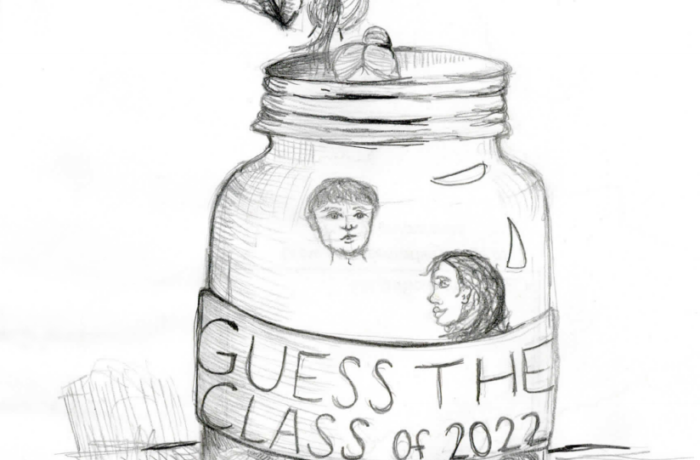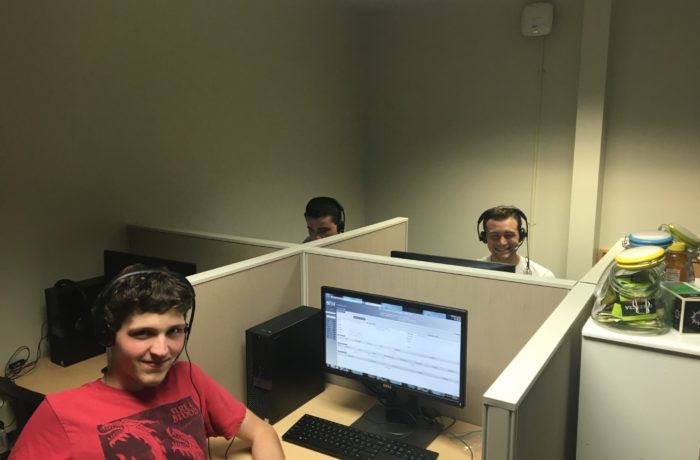
As the first semester quickly approaches its midway point, St. Michael’s College continues to face hard realities with its budget.
The budget deficit continues to grow, said Rob Robinson, the chief financial officer and treasurer.
“The deficit has grown each year over the past three,” Robinson said. “I believe and hope that the deficit will contract for the year that we are in. It’s too early to know for sure.”
Offering a genuine college experience with a declining enrollment has become increasingly difficult for the college to balance.
The audit on last year’s budget is not complete and has not been shared with the Board of Trustees, Robinson said. But a Sept. 12 Colchester Sun article reported that the budget deficit was projected at $1.1 million. The current deficit will be revealed to the board during a meeting the weekend of Oct. 19-20.
After the graduation of the class of 2018—the largest class that the college has had in the past decade at 615 students—the college faces an enrollment for each of the four classes that is below the ‘ideal’ rate of 510 students, including this year’s first-year cohort which was 480 as of Oct. 3. The Defender’s request for total enrollment was declined.
“We do have very real fundamental challenges that we are facing,” Robinson said. “We can’t continue to offer all of the things we were offering to an ever-declining amount of students.”
BUDGET REALITIES
Robinson said it takes $70-$75 million to operate the college annually, but the operation budget has dropped to around $71 million this year from last year’s $74 million. The drop reflects the decline in enrollment. The college has reduced its expense load stemming from a large group of faculty and staff who took retirement plans, he explained.
“The reality is at some point the number of students needs to grow or the (services) we offer need to be reduced,” Robinson said. “Reducing those (services) is difficult because they’re all things that are important in some way, shape, or form.”
Robinson said the ‘ideal’ number for student enrollment per class is 510 because that additional tuition offers the college a lot more flexibility to continue the services that the college aims to offer.
The reality of the demographic and market trends in higher education makes it challenging for the college to reach the 510 enrollment target number, said Michael Stefanowicz, director of admission.
“We live in arguably the most competitive region of the country with lots of high quality colleges and universities, and in this region the population of teenagers is in decline,” Stefanowicz said in an email. “These are two sides of the same coin, setting reasonable goals and recruiting as robustly, strategically, and enthusiastically as possible.”
FUNDRAISING GOALS RISE
In the Office of Institutional Advancement, which is responsible for fundraising, Jen Conetta, the director of annual giving, supervises a team of student-workers responsible for getting alumni to donate to the college through email, hard mail, or by phone.
“All fundraising, for the most part, works toward alleviating the budget,” Conetta said, “but some of the dollars are more flexible than others.”
Conetta said that last year Institutional Advancement raised $3.8 million in total gifts. However, of the total gifts, only $1.4 million were of unrestricted current-use — gifts that the college can use to aid the deficit.
“The biggest need right now, in terms of fundraising, is enough current-use dollars – money that we can spend in the fiscal year,” Conetta said.
RETIREMENT ONLY GOES SO FAR
In the past couple of school years, the college has offered voluntary separation packages (VSPs) to faculty and staff who hit the ‘‘70’’ requirement – one’s age and the years of service combined had to hit at least 70 to be eligible.
Robinson estimates the packages have helped the college save more than $1 million.
As successful as the VSPs were, the departures of faculty have created holes in various departments. Robinson said some professors are adopting new roles in which they teach different, various courses, such as teaching first-year seminars.
SGA FACES REALITIES
As the deficit continues to grow, Robinson said the college continues to pay attention to valuing the overall student-experience.
“We have gone out of our way, organizationally, to minimize the impact to students,” Robinson said. “We have made changes and reductions as much as possible to be in ways that didn’t have student impact.”
Yet, Nicole Ouellette ’19, the secretary of finance for the student government association (SGA), feels the realities of a shrinking enrollment.
Last year, the SGA budget was $368,500, but this year’s budget has dropped to $336,000. Ouellette said the budget is determined via a rolling average between current enrollment and projected enrollment. Prior to the start of the 2018-19 academic school year, Ouellette said the rolling average of enrollment was 1,600. The SGA then multiplied the average by 210, which is 65 percent of the $325 student activity fee, to get its current budget of $336,000.
Ouellette said the SGA executive board puts pressure on the clubs on campus to keep the deficit in mind when planning club activities and events. In addition, Ouellette said the SGA is trying to scale-down the various things the organization takes a part of.
“We still want clubs to do things,” Ouellette said, “but we have to be very mindful of the fact that our budget is getting smaller.”
LOOKING FORWARD
Conetta said last year Institutional Advancement saw its largest number of alumni donate to the college, with 3,973 alums – 20 percent of the St. Michael’s alumni population – contributing to the $3.8 million raised in total gifts.
“Students today have a really good understanding that alumni and parents help support their education and because of that, our 10 youngest classes of graduates give at some of the highest rates among all of our alumni,” Conetta said.
Stefanowicz said the admission team is enhancing the ‘Nominate-A-Purple-Knight’ program, as it will turn into a contest between current students and parents against alumni who nominate prospective students for 2019-20 school year. Stefanowicz said one winner from the winning group will be chosen for a $2,500 cash prize.
“By getting more (prospective) students on our radar, we can spread the good word about St. Michael’s,” he said.
“We’re all in this together,” Robinson said. “Our challenges are real. They are not entirely unique to St. Michael’s, but we need to find a St. Michael’s appropriate solution for that. We need to work through this together.”

